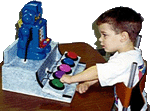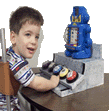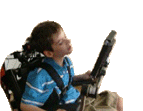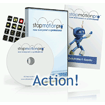|
TF-02226
|
Mini Matchers 1 � Who�s Hiding? Things
that Go Together and Opposites will encourage users to develop basic
and early literacy skills. Students can select from two different
activity types (Which piece? and Which pair?) to complete simple two-piece
puzzles that animate when answered correctly. Activities are
self-correcting, so all students can enjoy a feeling of achievement.
Three topics to choose between:
-
- Whose Home? � Find where each
of the animals live. The learning objectives are:
- Use close observation skills to distinguish between
images
- Use own knowledge and decoding skills to decide
which pieces show an animal with the right home in the
same pair
- Develop vocabulary
- Whose Baby? � Find the baby and
their Mummy. The learning objectives are:
- Use close observation to distinguish between images
- Use own knowledge and decoding skills to decide
which baby belongs to which mother
- Develop vocabulary
- and Whose Tail? � Find the
right tail for each of the animals. The learning objectives
are:
- Use close observation skills to distinguish between
images
- Use own knowledge and decoding skills to find the
pair that shows an animal matched to the correct tail
- Develop vocabulary
Two Activity Types
The program has two different activity types which are used across
the three topics:
- Which piece? � In this activity the question is presented
with one piece of the puzzle and then the student has to find
the answer piece from a choice of three pieces.
- Which pair? � In this activity three pairs of pieces are
presented and the student has to choose the pair that matches
correctly.
Features
- Clear interface and attractive images
- Full speech support throughout
- Mouse and switch accessible
- Custom pointer
- Optional reward screens.
Age range:
Ideas targeted:
- Early concepts
- Literacy
- Switch use
Accessibility:
- Mouse/ Trackball/ Joystick
- Keyboard
- Single Switch
- Multiple Switches
Minimum system requirements:
- PC: Microsoft Windows Version 98 or later,
Pentium 233 MHz processor, 64MB RAM, 800 x 600 screen
resolution, CD-ROM drive, 16 Bit colour and soundcard.
|
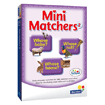 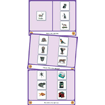
|
|

